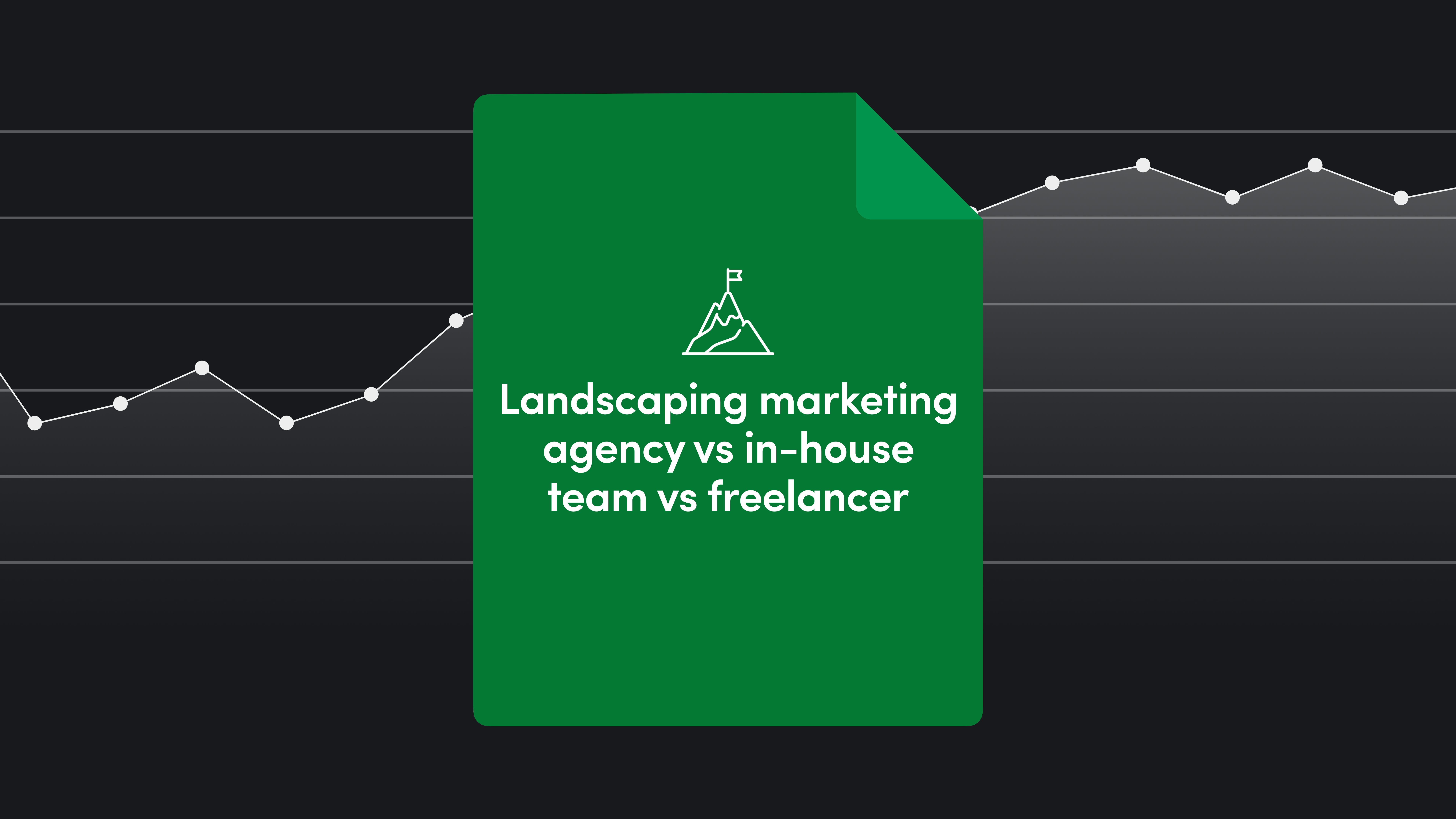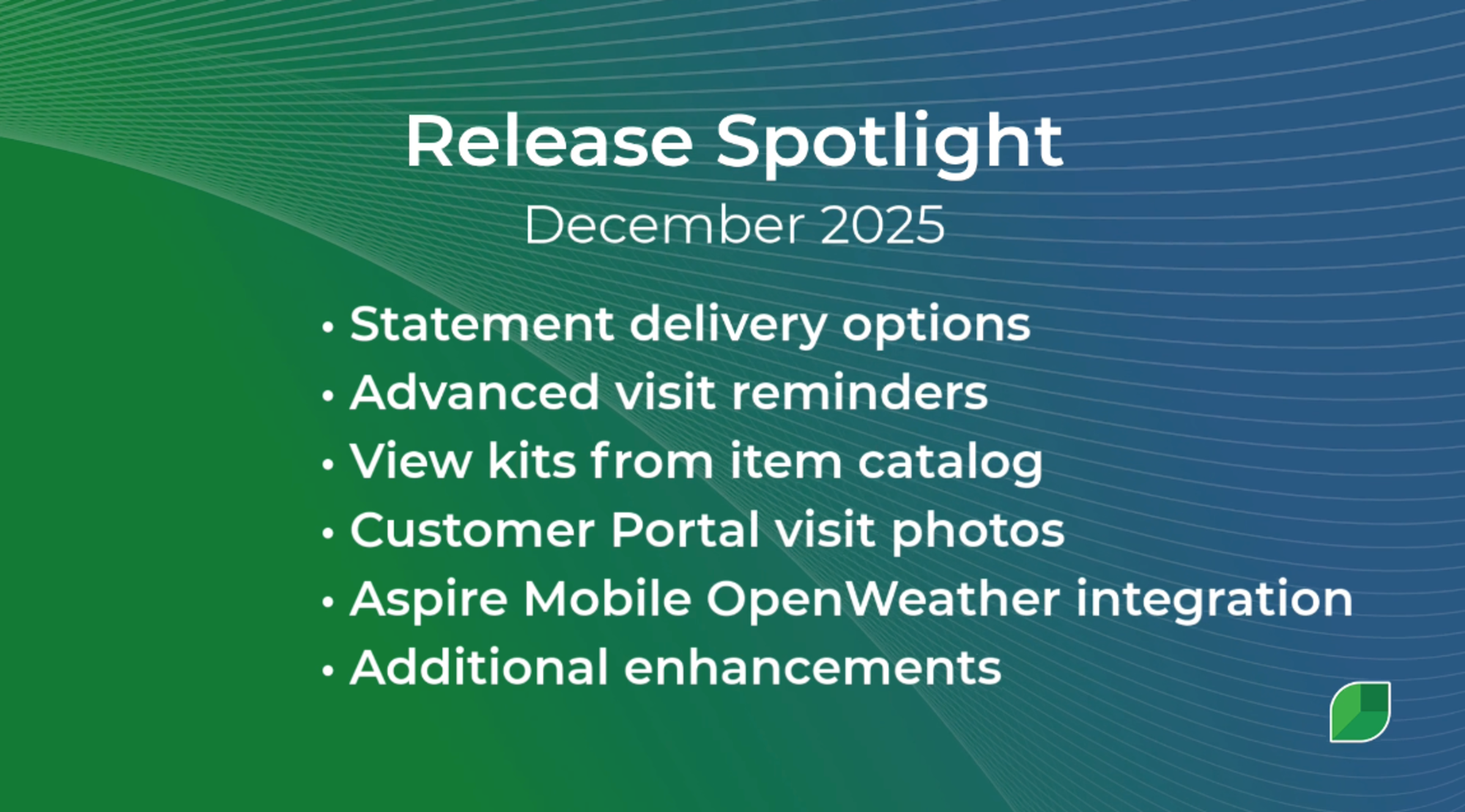Owning and operating a landscaping business provides an in-demand career with the potential to earn a comfortable living. Aspire data shows new landscaping businesses see an average profit margin of 15%, while growing landscaping services average around 45%.
Running a financially positive business proves challenging without business acumen or financial knowledge. Landscaping business owners struggle to manage cash flow throughout the year, allocate resources effectively, or set competitive yet profitable pricing for landscaping services.
Successful financial management begins with understanding how to set the right company budget. This article walks you through the key steps to craft a budget for your landscaping company.
Understanding the typical expenses in a landscaping company
Understanding business expenses, including startup and operating costs, is crucial for effective budgeting and profitability. The tables below provide estimated costs for starting and operating a landscaping or lawn care company.
Business startup costs
Startup costs for a landscaping company include:
Vehicle and equipment costs
Marketing costs
Licensing and permit costs
Facility or warehouse costs
Startup Cost | Amount |
Office or warehouse lease | $2,000-$15,000 per month |
Equipment | $2,000-$30,000 |
Vehicle(s) lease | $300-$800 per month per vehicle |
Licenses and legal | |
Marketing | $800-$4,000 per month |
Startup costs vary widely, depending on location, business size, and licensing requirements. Office space in New York City or San Francisco costs significantly more than comparable space in Indianapolis or St. Louis. You may only require a lawn mower, edger, and a few gardening tools for a lawn care company. However, full-service landscaping companies have much more extensive equipment needs.
Proper budgeting and planning for startup costs ensure a smooth launch and sustainable business growth.
Business operating costs
Operating costs include labor, utilities, raw material, equipment maintenance, marketing and advertising, and other overhead expenses essential to keep the business running.
Operating Cost | Amount |
Staff | $3,300-$4,250 per employee per month |
Fuel | $200-$300 per month per truck |
Rent | $2,000-$15,000 per month |
Insurance | General liability: $40-$55 per month Worker’s comp: $45-$70 per month Auto: $150 per month |
Equipment maintenance | $500-$1,000 per month |
Marketing | $800-$4,000 per month |
Managing operating costs is essential for maintaining financial health, sustaining growth, and ensuring long-term success in the landscaping industry. By reducing unnecessary expenses, businesses improve profit margins and increase cash flow, which is needed to fund day-to-day operations, pay suppliers, meet payroll, and invest in growth opportunities.
How to create a budget for your landscaping business
By understanding expenses, forecasting revenue, and setting realistic financial targets, landscaping companies budget effectively to drive profitability and business growth. The following steps walk you through the budgeting process.
1. Gather financial information
Start by tracking down financial information for your landscaping business. Review your income statements, balance sheets, cash flow statements, and business plan.
Field management software, such as Aspire, eliminates the need to track and manage financial information manually. Dashboards are included to monitor key real-time financial metrics, such as profit margins, cash flow, and revenue source. Integrations with QuickBooks and Acumatica ensure revenue sources are accurate and up to date.
2. Identify revenue sources
Next, identify all income sources for your landscaping business. This step proves critical for accurate budgeting. Include revenue from landscaping services, such as lawn mowing, mulching, hardscaping, and landscape design. Make sure to include revenue collected as fees, penalties, and maintenance contracts. List all revenue sources as individual line items.
3. List all business expenses
List all business expenses to assess your financial needs and allocate resources accurately. Make sure to be thorough as you compile expenses, or you risk creating a budget that won’t support your business needs throughout the year.
Include both fixed and variable costs in the analysis.
Fixed costs include the operating costs you pay regardless of output, such as employee salaries and rent.
Variable costs fluctuate based on the output from your business. Examples include costs of raw materials and sales commissions or bonuses.
4. Set financial goals
Establish clear financial goals to guide your budgeting decisions and measure business performance. Make sure goals align with your company’s overall vision and objectives. Goals include growing profit margins, lowering operating expenses, or increasing average tickets.
Use the SMART framework to set clear and actionable goals. SMART stands for:
Specific: Goal clearly defines the desired outcome.
Measurable: Goal includes quantifiable metrics to determine success.
Achievable: Goal is realistic and achievable.
Relevant: Goal contributes to company objectives.
Time-bound: Goal has a defined deadline or time frame.
5. Create the budget
The final step involves combining your financial information, expenses, revenue, and financial goals into a formal budget document.
List all sources of income for your landscaping business.
Estimate revenue for the quarter or year using projected sales, market demand, and seasonal fluctuations.
Include fixed business costs.
Calculate variable business costs.
Include estimated costs for equipment maintenance and new purchases.
Determine marketing budget for advertisements, promotions, and trade shows.
Add overhead costs and administrative expenses.
Review your budget periodically to track actual income and expenses against projected figures. Adjust your budget as needed to reflect changes in the business environment, such as shifts in market demand, pricing strategies, or operating costs.
How to optimize your landscaping budget and improve profitability
Landscaping and lawn care companies make strategic budgeting decisions to increase cash flow, reduce costs, and boost profitability. Follow these steps to optimize your budget.
Diversify scope of services: Offering a range of landscape maintenance services helps your business cater to a larger audience and attract new customers.
Identify high-margin services: Prioritize landscaping projects that bring in the highest margins.
Increase operational efficiency: Use field management software to automate manual processes and streamline operations.
Prioritize training: Invest in training to help employees improve their knowledge and job skills.
Maintain equipment: Keep landscaping and lawn care equipment in top shape to reduce replacement and repair costs.
Monitor overhead costs: Regularly evaluate overhead costs and identify unnecessary expenses.
Track real-time performance: Use landscaping software to monitor operational efficiencies, technician performance, job costing, and other key metrics.

Use the right tools to manage your finances
From accurately estimating costs and revenue to prioritizing investments in equipment and personnel, a well-designed budget helps landscaping companies achieve profitability and sustainable growth.
Aspire business management software provides real-time data and performance metrics, helping business owners make informed budgeting decisions, adapt to changing market conditions, and ensure revenue exceeds business expenses.
Ready to gain a deeper understanding of your financials and business performance? Request an Aspire demo today.
Frequently asked questions (FAQs)
Check out the answers to common questions about creating a landscaping budget.
Q1. What is a good profit margin for a landscaping company?
New and early-stage landscaping businesses see an average profit margin of around 15%, while growing landscaping services average around 45%. Fifteen to 20% is ideal for a residentially focused business, while 10% to 15% is realistic for a commercial property vendor.
There is no industry-wide average for the landscaping industry, as margins depend on the market, verticals, business size, and age.
Q2. How do you calculate overhead for landscaping business?
Add up all necessary expenses to run your landscaping business, such as rent/mortgage, utilities, insurance, office supplies, payroll, equipment maintenance, marketing, and other general operating expenses.
Q3. What is the average startup cost for a landscaping business?
Startup costs vary depending on the size of the landscaping business, market, and other factors. Startup costs for a small business can run as low as $5,000. Startup costs for larger companies with multiple employees reach $50,000 or more.










